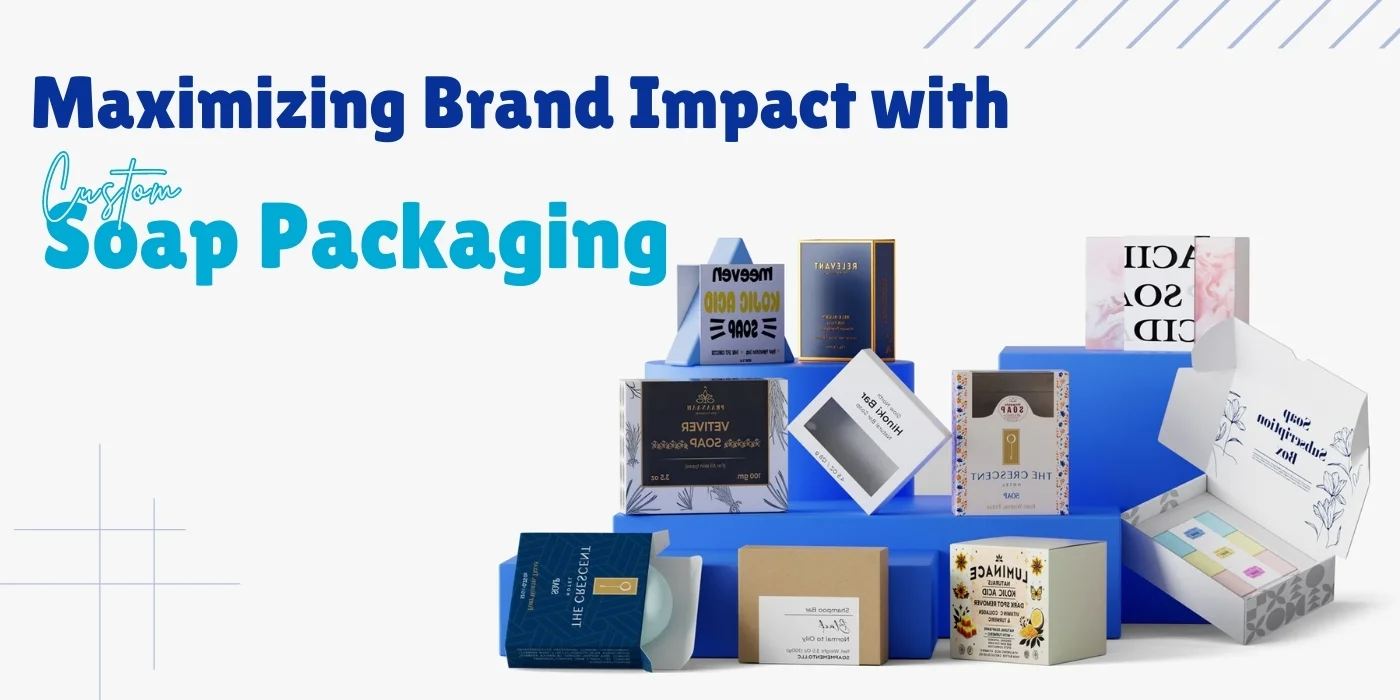

In today’s competitive market, the role of packaging in brand identity cannot be overstated. Packaging is often the first point of interaction between your product and potential customers, making it a critical component of your overall branding strategy. The right packaging not only protects your product but also communicates your brand’s values, quality, and personality to the consumer. This is particularly true in the soap industry, where custom soap boxes have become a vital tool for brands looking to differentiate themselves on crowded retail shelves.
Packaging is much more than just a protective layer around your product; it is a powerful marketing tool that can influence how consumers perceive your brand. Studies have shown that customers form opinions about a product within seconds of seeing it, and packaging plays a significant role in this snap judgment. A well-designed custom soap box can create a positive first impression, attract attention, and convey the quality and uniqueness of your product. On the other hand, poor packaging can detract from the perceived value of your product, leading to lost sales and reduced brand loyalty.
In a retail environment, where products are often displayed side by side with competitors, the first impression created by your packaging can make or break a sale. Custom soap boxes that are eye-catching and well-branded can draw customers’ attention away from competing products and encourage them to pick up and examine your product more closely. This initial engagement is crucial because it increases the likelihood of a purchase and helps to build a connection between the consumer and your brand.
When it comes to soap packaging, the material you choose plays a crucial role in the overall presentation and protection of your product. The choice of material can impact not only the aesthetic appeal but also the durability and sustainability of the packaging. In the soap industry, there are several popular materials that brands frequently use to create their custom soap boxes. These include kraft paper, cardboard, luxury finishes, and eco-friendly materials. Each material offers unique benefits, and understanding these can help you make an informed decision for your brand.
Kraft paper is a favorite among brands that prioritize sustainability. It’s made from natural, unbleached wood fibers, giving it a rustic and eco-friendly appearance. Kraft paper is biodegradable and recyclable, making it an excellent choice for brands aiming to minimize their environmental footprint.
Cardboard, on the other hand, is known for its versatility and cost-effectiveness. It’s sturdy, lightweight, and can be easily customized with different finishes and prints. Cardboard is a go-to material for many soap brands because it balances durability with design flexibility, allowing for a wide range of packaging styles.
For brands looking to convey luxury, materials such as rigid boxes with high-end finishes like gloss, matte, or soft-touch laminations are ideal. These materials provide a premium look and feel, making them perfect for luxury soaps and gift sets.
The use of custom display boxes offers several key benefits that contribute to the overall success of a product. Firstly, these boxes are designed to maximize product visibility. In a crowded retail environment, products need to stand out, and custom display boxes achieve this by presenting the product in an eye-catching manner. This increased visibility can lead to higher sales, as consumers are more likely to notice and pick up products that are attractively displayed.
Secondly, custom display boxes provide a level of protection that standard packaging cannot. These boxes are designed to fit the product perfectly, reducing the risk of damage during transport and handling. This is particularly important for delicate items such as bath bombs, jewelry, and chocolates, where even minor damage can affect the product’s appeal.
Another significant benefit of custom display boxes is their ability to reinforce brand identity. Every aspect of the box, from the material to the color scheme, can be customized to reflect the brand’s image. This consistency in branding across all packaging materials helps to build brand recognition and loyalty among consumers.
Finally, custom display boxes offer a unique opportunity to create a memorable unboxing experience. This is particularly important in the age of social media, where consumers often share their unboxing experiences online. A well-designed display box can make a lasting impression, encouraging consumers to share their experience and thereby increasing brand visibility.
Each packaging material comes with its own set of advantages and disadvantages that should be considered in the context of your brand’s goals and values.
Kraft paper is highly favored for its eco-friendly nature, but it can be limited in terms of color vibrancy and printing capabilities. The natural brown color of kraft paper can give a product an earthy, organic feel, which is ideal for natural and organic soap brands. However, if your branding relies heavily on bright colors and intricate designs, kraft paper might not provide the best canvas.
Cardboard is incredibly versatile and can accommodate a wide range of designs, from simple to complex. It’s also durable enough to protect the soap from damage during transit. However, cardboard packaging is not as sustainable as kraft paper, which might be a downside for eco-conscious brands. Additionally, while it is cost-effective, the quality can vary depending on the thickness and type of cardboard used.
Luxury packaging materials, like rigid boxes, offer a superior unboxing experience and can significantly enhance the perceived value of the product. These materials are ideal for high-end brands or special edition products. The downside is that luxury packaging materials are often more expensive and may not align with sustainable practices if they include non-recyclable elements.
Selecting the right material for your soap packaging involves balancing your brand’s values, budget, and the type of experience you want to create for your customers. If sustainability is a core value, kraft paper may be the best choice, aligning with an eco-friendly brand image while also offering a rustic, organic appeal. For brands that need a balance between durability and design flexibility, cardboard is an excellent option. It allows for creative freedom in design without compromising on protection or cost.
Luxury brands, or those looking to position their products at the higher end of the market, might opt for rigid boxes or other premium materials. These materials not only protect the soap but also elevate the product’s perceived value, making it an attractive option for gift packaging or premium product lines.
When choosing the right material, it’s important to consider the entire lifecycle of the packaging, from production to disposal. Understanding the environmental impact, durability, and overall cost of each material will help you make an informed decision that supports your brand’s goals and appeals to your target audience.
In a market flooded with soap products, custom packaging is one of the most powerful tools small brands have to differentiate themselves. With countless options available to consumers, your soap packaging needs to do more than just protect the product; it must capture attention, convey the brand’s identity, and persuade the customer to choose your soap over others. Custom soap boxes allow you to create a unique, visually appealing package that stands out on crowded retail shelves, making it easier for consumers to recognize and remember your brand.
For small businesses, custom packaging is not just an added expense—it’s an investment in your brand’s future. Packaging is often the first physical interaction a customer has with your product, and this first impression can have a lasting impact. Well-designed, high-quality custom soap boxes can enhance the perceived value of your product, justify a higher price point, and foster brand loyalty. Additionally, custom packaging allows you to tell your brand’s story, communicate your values, and build a connection with your customers, which is essential for driving repeat business and word-of-mouth referrals.
Custom packaging also provides small brands with the flexibility to cater to specific market segments. For example, if your brand offers organic, all-natural soaps, you might choose eco-friendly kraft packaging to reinforce your commitment to sustainability. Alternatively, if your brand targets the luxury market, you might opt for high-end materials and finishes that convey exclusivity and sophistication.
Numerous small soap brands have successfully leveraged custom packaging to elevate their brand and drive growth. For instance, a small, artisanal soap company might use custom kraft soap boxes with minimalist designs to emphasize the natural ingredients used in their products. By aligning the packaging with the brand’s values, they can attract a loyal customer base that shares their commitment to sustainability.
Another example could be a luxury soap brand that uses custom printed boxes with gold foil accents and soft-touch finishes to create a high-end unboxing experience. This not only appeals to consumers looking for premium products but also allows the brand to position itself at a higher price point, increasing profit margins.
These case studies illustrate how small brands can use custom packaging to differentiate themselves, create a strong brand identity, and ultimately, achieve business growth.
Kraft packaging has become a popular choice for brands that are committed to sustainability, and for good reason. Kraft paper is made from natural, unbleached wood pulp, which not only gives it a rustic, organic appearance but also ensures that it is fully biodegradable and recyclable. Unlike traditional packaging materials that can take centuries to decompose, kraft paper breaks down naturally within a few months, making it an environmentally friendly option for custom soap boxes.
Another key factor that makes kraft packaging eco-friendly is its production process. The manufacturing of kraft paper uses fewer chemicals and less energy compared to other paper types, resulting in lower carbon emissions. This means that by choosing kraft soap boxes, your brand can significantly reduce its environmental footprint. Additionally, the raw materials used in kraft paper are often sourced from responsibly managed forests, further contributing to the sustainability of this packaging option.
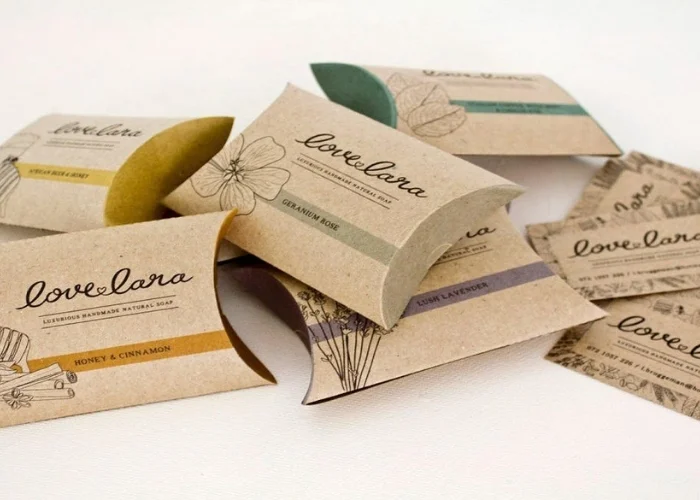
Using kraft soap boxes for your products offers numerous benefits that go beyond their environmental credentials. For one, kraft packaging resonates strongly with consumers who are increasingly prioritizing sustainability in their purchasing decisions. By opting for kraft packaging, your brand can appeal to this growing segment of eco-conscious consumers, thereby enhancing your brand’s reputation and fostering customer loyalty.
Another benefit of kraft soap boxes is their versatility in design. While kraft paper has a natural, earthy look, it can be easily customized with various printing techniques, such as embossing, debossing, and even spot UV. This allows you to create a unique, branded look that aligns with your brand’s identity while maintaining an eco-friendly image. Additionally, kraft soap boxes are highly durable, offering excellent protection for your soap products during shipping and handling.
Moreover, the rustic aesthetic of kraft soap boxes can be particularly appealing for brands that emphasize natural ingredients, artisanal craftsmanship, or a back-to-basics approach to product formulation. The natural brown color of kraft paper creates an immediate association with nature, making it an ideal choice for brands that want to convey a message of purity, simplicity, and environmental responsibility.
One of the most significant advantages of kraft soap boxes is their customizability. Despite their simple, natural appearance, kraft boxes can be transformed into a visually striking packaging solution with the right design elements. For instance, adding a custom logo through embossing or debossing can give your kraft soap box a premium feel, while still maintaining its eco-friendly appeal.
Color printing on kraft paper can also be used to enhance your brand’s visual identity. Although kraft paper is typically brown, it can be printed with bold, vibrant colors that stand out and grab attention. This allows you to create packaging that not only reflects your brand’s aesthetic but also draws in potential customers with its unique look.
Furthermore, you can incorporate windows or cut-outs in kraft soap boxes to showcase your soap product while maintaining the integrity of the packaging. These design features add an element of sophistication and transparency, allowing customers to see the product before making a purchase, which can increase their confidence in the quality of your soap.
In summary, kraft soap boxes offer a perfect blend of sustainability, durability, and design flexibility. By customizing these boxes to fit your brand’s aesthetic, you can create packaging that resonates with eco-conscious consumers while ensuring that your product stands out on the shelf.
In the world of consumer goods, luxury packaging is more than just an added layer of protection—it’s a statement of quality, sophistication, and exclusivity. For brands that position themselves at the higher end of the market, luxury soap boxes are essential in communicating the premium nature of their products. The tactile experience of high-quality materials, the visual appeal of intricate designs, and the overall presentation of luxury packaging work together to enhance the perceived value of the product inside.
When consumers encounter a luxury soap box, their expectations for the product are immediately elevated. The weight of the box, the smoothness of the finish, and the attention to detail in the design all contribute to a sense of exclusivity and quality. This perception is crucial for luxury brands because it justifies a higher price point and reinforces the brand’s positioning in the market. By investing in luxury packaging, brands can create an unboxing experience that leaves a lasting impression and encourages repeat purchases.
The materials and designs used in luxury soap boxes are key to creating the premium look and feel that these products require. Rigid boxes, for example, are a popular choice for luxury packaging due to their sturdiness and ability to maintain their shape even under pressure. These boxes can be covered with a variety of finishes, including high-gloss, matte, or soft-touch laminations, each offering a different tactile experience that can be tailored to the brand’s image.
Luxury soap boxes often incorporate additional design elements such as embossing, debossing, and foil stamping, which add depth and texture to the packaging. Foil stamping, in particular, is a technique that can be used to create metallic accents, such as gold or silver, that catch the light and draw attention to specific parts of the design, such as the brand’s logo. These details not only enhance the visual appeal of the packaging but also contribute to the overall luxury experience.
Another option for luxury soap boxes is the inclusion of magnetic closures or ribbon ties, which add a touch of elegance and make the unboxing experience more interactive. Die-cut windows can also be integrated into the design, allowing consumers to get a glimpse of the product inside without compromising the luxurious appearance of the box.
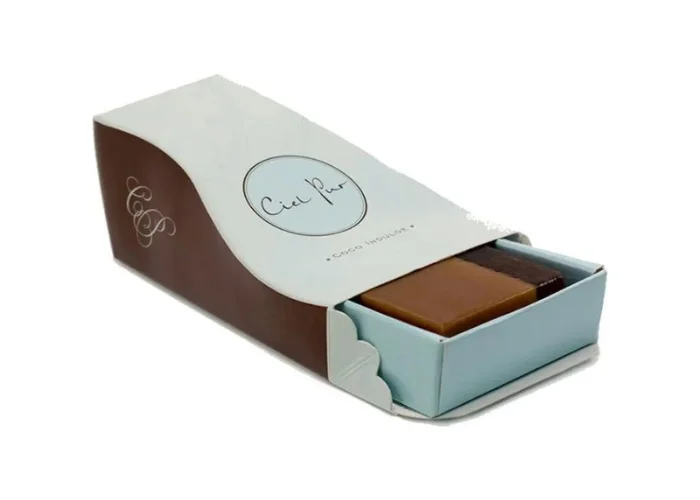
There are countless ways to design luxury soap boxes that reflect the unique identity of a brand. For example, a high-end skincare brand might opt for a white rigid box with a soft-touch finish, embellished with gold foil stamping for the logo and subtle embossing along the edges. This combination creates a clean, sophisticated look that appeals to discerning customers who value minimalism and elegance.
Another brand might choose a black matte rigid box with a magnetic closure and silver foil accents. Inside, the soap could be nestled in a bed of satin or velvet, further enhancing the luxurious feel of the packaging. This type of design is particularly effective for gift sets or special edition products, where the packaging itself becomes part of the overall experience.
For brands that want to emphasize sustainability without sacrificing luxury, eco-friendly luxury soap boxes made from recycled materials can be designed with the same attention to detail. These boxes might feature textured finishes that mimic natural materials, combined with muted colors and minimalist design elements that convey a sense of refined simplicity.
Overall, the key to designing effective luxury soap boxes lies in the careful selection of materials, finishes, and design elements that align with the brand’s identity and the expectations of its target audience. By creating a cohesive, premium packaging experience, brands can elevate their products and strengthen their position in the luxury market.
Lid and tray boxes are a popular packaging option for soap products due to their combination of functionality and style. This type of box consists of two separate pieces: a tray that holds the soap and a lid that covers it. The design is simple yet effective, providing a secure fit that keeps the soap in place while also offering a clean, professional appearance.
The primary advantage of lid and tray boxes is their versatility. They can be customized to fit soaps of various shapes and sizes, making them suitable for a wide range of products. Additionally, the separate lid and tray components allow for creative design possibilities, such as using contrasting colors or materials for the lid and tray, or incorporating die-cut windows or embossed logos on the lid.
When it comes to styling lid and tray boxes, the possibilities are nearly endless. Brands can choose from a variety of materials, including kraft paper, cardboard, or even luxury rigid board for a more premium look. The lid and tray can be designed with matching or complementary colors, allowing brands to create a cohesive look that aligns with their brand identity.
Embossing and debossing are popular design techniques for lid and tray boxes. These methods add texture to the packaging, creating a tactile experience that enhances the overall quality of the product. Foil stamping is another option that can be used to add metallic accents to the design, making the packaging more eye-catching and luxurious.
For brands looking to create a more interactive unboxing experience, magnetic closures or ribbon pulls can be added to the lid. These features not only make the packaging more functional but also add an element of surprise and delight for the consumer. Additionally, die-cut windows can be incorporated into the lid, allowing consumers to see the soap inside without opening the box.
For luxury brands, lid and tray boxes offer a premium packaging solution that can be customized to reflect the brand's identity. The ability to incorporate high-end finishes, like foil stamping or embossing, adds to the overall luxurious feel of the product, making it perfect for high-end soap brands looking to elevate their packaging.
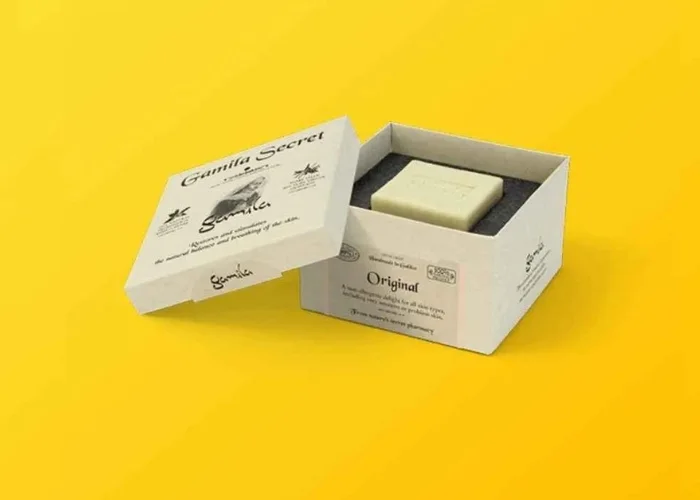
Overall, lid and tray boxes are a versatile and stylish packaging solution that provides both security and aesthetic appeal. Whether you're looking to package a luxury soap product, create a memorable gift set, or simply ensure your soap arrives safely at its destination, lid and tray boxes offer the perfect combination of form and function.
In a crowded retail environment, product visibility is key to catching the attention of potential customers. Soap boxes with windows are an effective way to showcase your product while still providing the protection and branding opportunities of traditional packaging. A window on the soap box allows customers to see the color, texture, and even the scent of the soap, which can be a deciding factor in their purchasing decision.
When designing soap boxes with windows, it's important to consider how the window will be integrated into the overall design of the packaging. The window should be strategically placed to highlight the most appealing aspects of the soap, whether that's the unique swirl of colors, the inclusion of natural ingredients, or the overall shape of the bar.
Custom shapes for the window can add an element of creativity and uniqueness to your packaging. For example, a window shaped like a leaf could be used to emphasize the natural ingredients in the soap, while a heart-shaped window might be used for a soap intended as a gift. The material used for the window is also important; a clear, durable plastic that provides a full view of the product is typically the best choice.
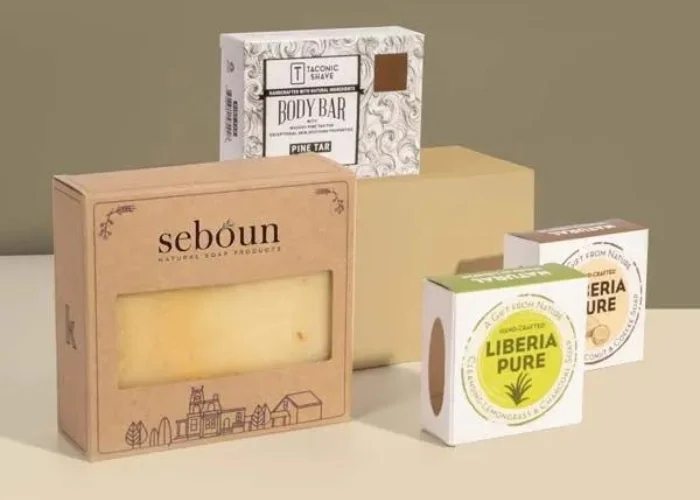
Windowed soap boxes can be made from a variety of materials, each offering different benefits. Kraft paper is a popular choice for eco-friendly brands, as it provides a natural, rustic look that complements the transparency of the window. Cardboard is another versatile option that can be easily customized with vibrant colors and detailed designs.
The window itself can be made from biodegradable plastic for brands that prioritize sustainability, ensuring that the entire package aligns with eco-friendly values. Custom printing can be used to add branding elements around the window, such as the company logo or product name, to further enhance the product's shelf appeal.
In conclusion, soap boxes with windows are an effective way to enhance product visibility, attract customers, and drive sales. By carefully considering the design and materials used, you can create a packaging solution that not only protects your product but also showcases it in the best possible light.
A logo is one of the most recognizable elements of a brand, and incorporating it into your custom soap boxes is a powerful way to reinforce your brand identity and increase recognition. A well-placed logo on the packaging can serve as a visual anchor, making your product instantly identifiable on store shelves. For customers who are already familiar with your brand, the logo can serve as a reassurance of the quality they’ve come to expect. For new customers, it can create a memorable first impression that encourages brand loyalty.
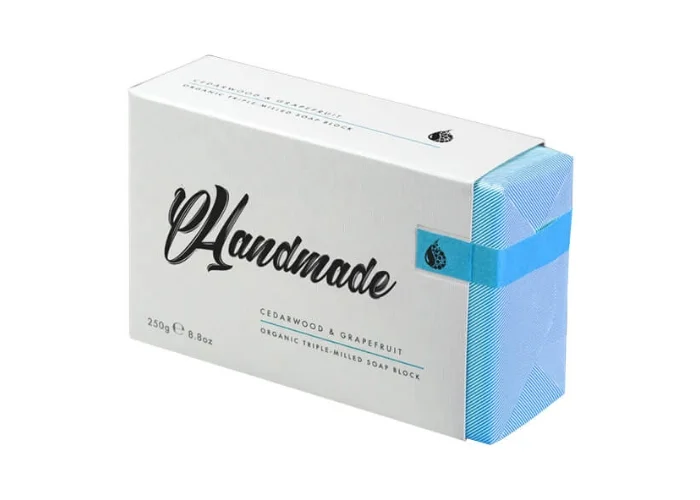
Embossing and debossing are also effective methods for adding a tactile element to the logo. Embossing raises the logo above the surface of the packaging, while debossing presses it into the material. Both techniques create a textural contrast that not only draws the eye but also invites touch, making the packaging more interactive.
For brands that prefer a more understated look, spot UV printing can be used to add a glossy finish to the logo, making it stand out subtly against a matte background. This technique is ideal for minimalist designs where the focus is on the quality of the product rather than flashy packaging.
Numerous brands have successfully leveraged logo-branded packaging to strengthen their market presence and drive sales. For instance, a natural soap brand might use kraft boxes with a debossed logo to emphasize its commitment to organic, eco-friendly products. This type of packaging not only appeals to the brand’s target demographic but also reinforces its core values through every aspect of the design.
Another example could be a luxury soap brand that uses rigid boxes with foil-stamped logos. The combination of the sturdy material and the eye-catching metallic finish creates a premium look that resonates with consumers who are willing to pay a higher price for perceived quality.
These case studies illustrate the impact that logo-branded packaging can have on a brand's identity and market success. By investing in high-quality printing techniques and thoughtful design, brands can create packaging that not only protects their product but also enhances their brand recognition and loyalty.
Handmade soaps are often crafted with care, using natural ingredients and artisanal methods. As such, they deserve packaging that reflects their uniqueness and quality. Handmade soap boxes play a crucial role in conveying the craftsmanship and attention to detail that goes into each bar. Unlike mass-produced soaps, handmade soaps often have unique shapes, colors, and textures, all of which can be showcased through custom packaging.
Special packaging not only protects the soap but also communicates the story behind the product. Whether it's the use of organic ingredients, traditional methods, or the personal touch of a small-batch producer, the packaging should reflect these qualities and create a connection with the consumer.
Another approach is to use recycled materials or biodegradable options to align with the eco-friendly nature of many handmade soaps. Adding elements like twine or a hand-tied ribbon can enhance the artisanal appeal, making each package feel like a personal gift.
Transparency can also be an essential design element. Incorporating a small window or using clear, eco-friendly wraps can allow customers to see the soap's unique appearance, reinforcing the handmade quality. This transparency builds trust with consumers, who appreciate being able to see the product before purchasing it.
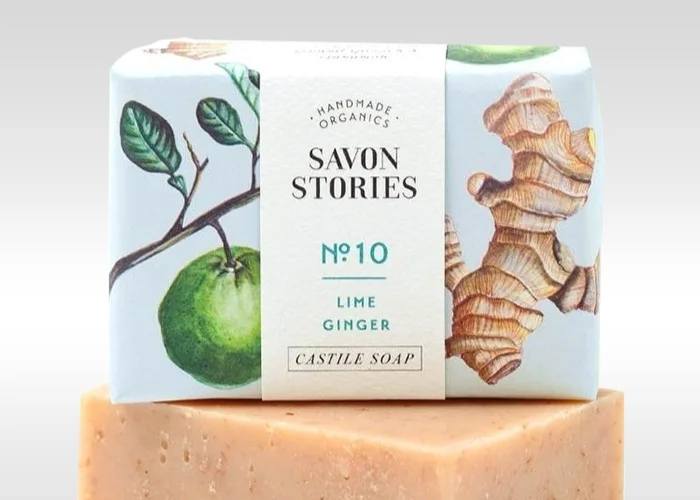
When choosing materials for handmade soap boxes, it's essential to consider both the aesthetic and the environmental impact. Recycled kraft paper is a go-to option for many brands, as it provides a natural, earthy look that complements the handmade nature of the product. Additionally, kraft paper is eco-friendly, biodegradable, and aligns with the sustainable values often associated with artisanal products.
For a more luxurious touch, rigid boxes made from recycled cardboard can offer a higher-end feel while still maintaining an eco-conscious approach. These boxes can be customized with subtle finishes, like embossing or foil accents, to create a packaging solution that reflects the premium nature of the handmade soap.
In conclusion, handmade soap boxes are more than just packaging; they are an extension of the product itself. By choosing materials and designs that reflect the artisanal quality of the soap, brands can create a packaging experience that resonates with consumers and enhances the overall appeal of their product.
Bath bombs are a unique product that presents specific challenges when it comes to packaging. Their delicate, crumbly nature means that they require sturdy packaging that can protect them from damage during transportation and handling. At the same time, bath bombs are often visually striking, with vibrant colors and interesting shapes, making it essential to have packaging that showcases their appearance while still offering protection.
When designing bath bomb boxes, the material must be both durable and attractive. Cardboard is a popular choice for bath bomb packaging because it offers the necessary strength to protect the product while also being versatile enough to allow for custom printing and design. Rigid boxes can provide an even higher level of protection, making them ideal for luxury bath bombs or gift sets.
Design considerations for bath bomb packaging should focus on both aesthetics and functionality. Clear windows or cutouts are excellent features to include, as they allow customers to see the vibrant colors and intricate designs of the bath bombs without compromising their protection. Additionally, inserts can be used to hold the bath bombs securely in place, preventing them from moving around and getting damaged during transit.
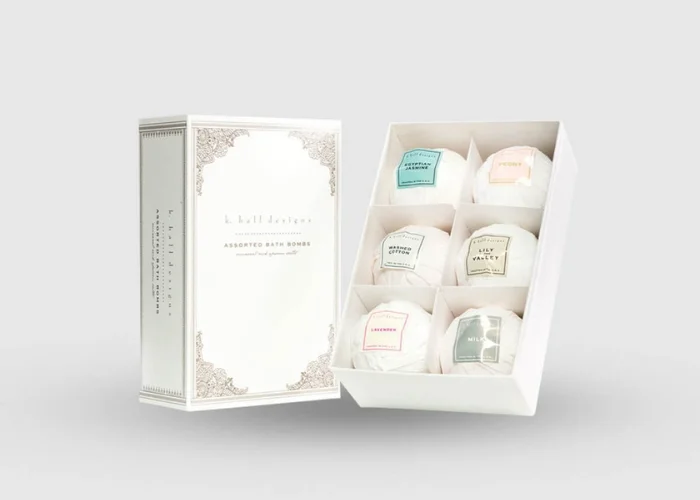
Customization is key when it comes to bath bomb boxes. Whether your brand’s aesthetic is luxurious, eco-friendly, or fun and playful, the packaging should reflect this through its design, colors, and materials. Kraft paper boxes with natural, earthy tones are ideal for brands that focus on sustainability and natural ingredients, while glossy rigid boxes with metallic accents can elevate the brand image for high-end products.
Printing techniques such as embossing, foil stamping, or even spot UV can be used to add brand logos and other design elements that enhance the visual appeal of the packaging. These techniques not only add texture and shine but also make the packaging feel more premium, encouraging customers to view the product as a higher-value purchase.
For brands targeting younger audiences, vibrant colors, playful patterns, and whimsical fonts can be used to create a sense of fun and excitement. Bath bomb packaging can also incorporate themes related to the bath bomb’s fragrance or intended use, such as floral patterns for a lavender-scented bomb or oceanic designs for a sea-inspired product.
By aligning the design of the bath bomb boxes with the brand’s overall aesthetic, you can create a cohesive brand image that resonates with your target audience and enhances the customer experience.
Cardboard is one of the most versatile materials available for soap packaging, offering a balance of durability, cost-effectiveness, and design flexibility. One of the primary benefits of cardboard soap boxes is their strength, which provides excellent protection for soap products during shipping and handling. This durability ensures that the soap reaches the customer in perfect condition, free from damage or deformation.
In addition to its protective qualities, cardboard is also lightweight, which helps to reduce shipping costs—a significant advantage for e-commerce businesses. Moreover, cardboard is a highly customizable material, allowing brands to create packaging that reflects their unique identity. Whether through custom printing, embossing, or die-cutting, cardboard soap boxes can be tailored to fit the specific needs and aesthetic of any brand.
Die-cut windows are another popular feature for cardboard soap boxes. These windows allow customers to see the soap inside, adding a layer of transparency and trust. The window can be cut into various shapes, such as circles, rectangles, or custom shapes that align with the brand’s theme or logo.
For a more premium look, embossing and debossing can be used to add texture and depth to the cardboard. These techniques can highlight specific design elements, such as the brand name or logo, making the packaging more tactile and engaging.
Foil stamping is another option that can add a touch of luxury to cardboard soap boxes. By applying metallic foil to specific areas of the design, you can create shiny accents that catch the light and draw attention to the product.
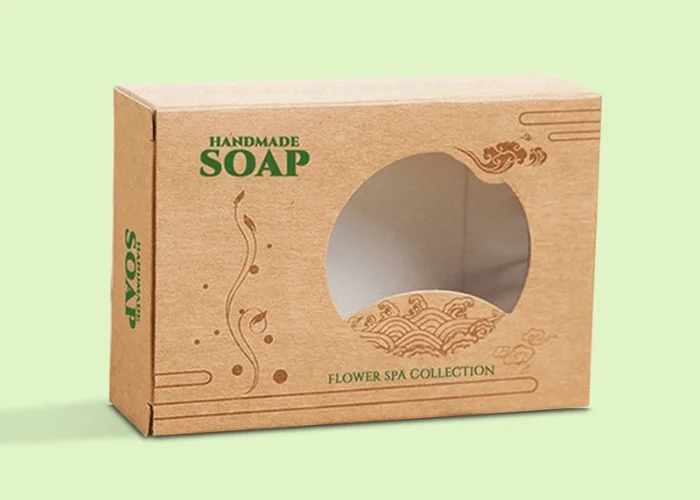
One of the reasons why cardboard soap boxes are so popular is their adaptability. Whether you’re packaging small, handmade soaps or large, mass-produced bars, cardboard can be easily cut and folded to fit any size or shape. This makes it an ideal material for brands that offer a variety of soap products.
For eco-conscious brands, recycled cardboard is a great option that aligns with sustainability goals. Recycled cardboard maintains the same protective qualities as virgin cardboard but with a reduced environmental impact, making it a win-win for both the brand and the planet.
In summary, cardboard soap boxes offer a perfect combination of durability, cost-effectiveness, and design flexibility. By customizing these boxes to fit the specific needs of your brand and products, you can create packaging that not only protects your soap but also enhances its appeal to consumers.
Pet care products, including dog soaps, require special consideration when it comes to packaging. Unlike human skincare products, which often focus on luxury and aesthetics, dog soap packaging must prioritize practicality and durability. Pet owners are looking for products that are safe, effective, and easy to use, and the packaging needs to reflect these qualities.
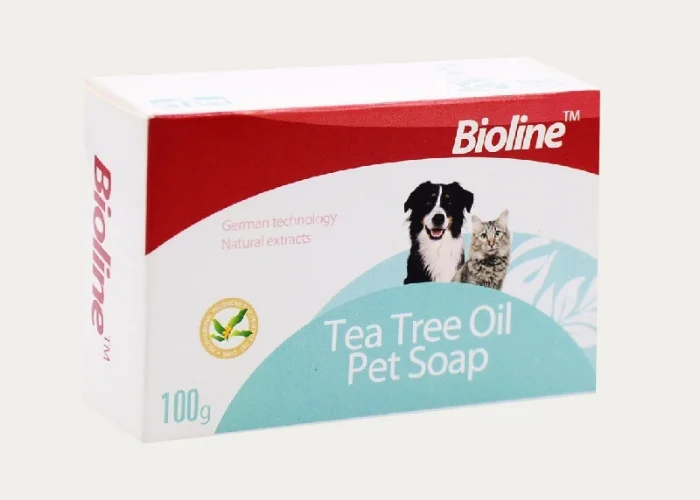
When designing dog soap boxes, it’s important to consider both the practical needs of the product and the brand’s overall image. Pet owners often view their pets as family members, so packaging that conveys care, love, and safety will resonate strongly with this audience.
Bright colors, playful fonts, and images of happy, healthy dogs can help make the packaging more appealing to pet owners. Including features like easy-open tabs or resealable closures can also add to the convenience and usability of the product.
For brands that emphasize natural ingredients or eco-friendliness, kraft paper or recycled cardboard can be used to reinforce these values. Custom printing can be used to highlight the natural, organic ingredients in the soap, making it clear that the product is safe and gentle for pets.
Another example could be a brand that targets premium pet care with luxury rigid boxes that feature foil-stamped logos and high-quality finishes. The packaging could include a window that allows pet owners to see the soap inside, reinforcing the product’s quality and natural ingredients.
These examples show how custom dog soap boxes can be designed to meet the specific needs of the pet care market while also reflecting the brand’s identity and values.
One of the main advantages of soap sleeve packaging is its simplicity. Because the sleeve covers only a portion of the soap, it requires less material than a full box, making it a more cost-effective option. Additionally, the exposed ends of the soap allow customers to see and smell the product, enhancing the sensory experience and increasing the likelihood of a purchase.
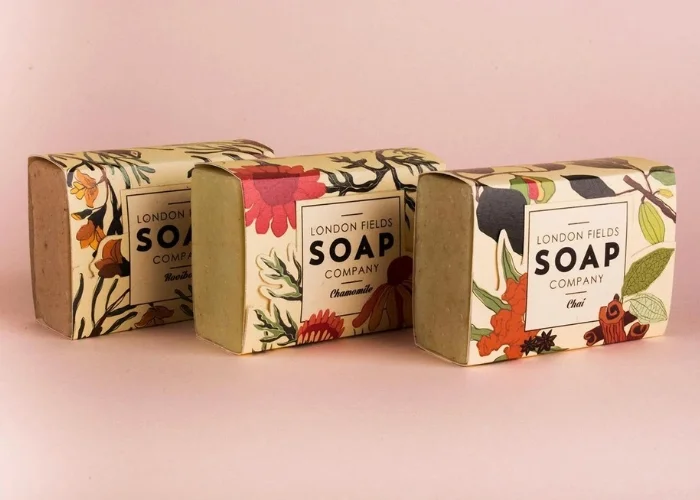
Soap sleeves can be customized in a variety of ways to align with your brand’s aesthetic. Printing techniques such as digital printing or offset printing can be used to create vibrant, full-color designs that cover the entire surface of the sleeve. Brands can incorporate their logos, product names, and other branding elements into the design, creating a cohesive look that reinforces brand identity.
For a more premium feel, embossing or debossing can be used to add texture to the sleeve, making the packaging more tactile and engaging. Foil stamping is another option that can add a touch of luxury to the design, making the packaging stand out on the shelf.
Die-cutting is a popular technique for soap sleeves, allowing for unique shapes and patterns to be incorporated into the design. For example, a sleeve could be die-cut to create a window that reveals part of the soap, adding an element of transparency and trust.
Soap sleeve packaging offers a versatile and modern approach to branding, but to maximize its effectiveness, it’s essential to integrate the sleeves seamlessly with your overall brand identity. Here are some best practices to consider:
Consistency in Design: Ensure that the design elements on the soap sleeves—such as colors, fonts, and logos—align with your brand’s existing visual identity. This consistency reinforces brand recognition and ensures that the packaging feels like a natural extension of your product line.
Highlight Key Features: Use the limited space on the soap sleeve strategically to highlight the most important features of your product. For example, if your soap is organic or made with specific beneficial ingredients, make sure these points are prominently displayed.
Interactive Elements: Consider adding interactive elements to the sleeve, such as QR codes that link to your website or social media channels. This not only provides additional information to the consumer but also creates an opportunity for engagement beyond the physical product.
Sustainability: If your brand prioritizes sustainability, choose eco-friendly materials for your soap sleeves. Recycled paper or biodegradable materials can align with eco-conscious values while still providing a high-quality feel.
Seasonal and Limited-Edition Designs: Soap sleeves are easy to update for seasonal promotions or limited-edition products. This flexibility allows you to create timely, relevant packaging that resonates with consumers during special occasions or holidays.
By following these best practices, you can use soap sleeve packaging to create a modern, sleek presentation that appeals to today’s consumers while staying true to your brand’s identity.
Wrapping paper also serves as a canvas for brand storytelling. Whether it’s through intricate patterns, minimalist designs, or personalized messages, the wrapping can convey your brand’s narrative, making each bar of soap feel unique and special.
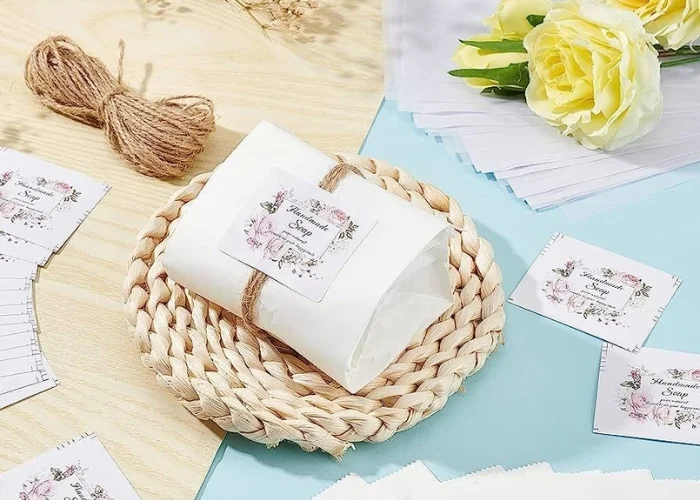
When selecting soap wrapping paper, the choice of material is crucial. Recycled paper is a popular option for eco-conscious brands, offering both sustainability and a rustic, natural look. For a more luxurious feel, tissue paper or waxed paper can be used, providing a smooth, elegant texture that elevates the unboxing experience.
Design plays a critical role in the effectiveness of soap wrapping paper. Custom prints can include anything from brand logos and product names to seasonal motifs and artistic illustrations. The design should not only reflect the brand’s identity but also create an emotional connection with the consumer.
Embossing or foil accents can be added to the wrapping paper to give it a more premium look and feel. These elements add texture and shine, making the packaging more engaging and appealing.
The use of soap wrapping paper can significantly enhance the perception of your brand. Wrapping paper creates a sense of anticipation and care, as customers unwrap the soap to reveal the product inside. This unboxing experience can leave a lasting impression, making the purchase feel more like a gift, even if it’s for personal use.
For brands that focus on luxury or handmade products, wrapping paper can emphasize the artisanal quality of the soap. The choice of material, design, and finishing touches all contribute to a perception of exclusivity and attention to detail.
Moreover, wrapping paper is a versatile branding tool that can be easily updated for special editions, seasonal offerings, or promotional events. By varying the design while maintaining brand consistency, you can keep your packaging fresh and relevant, which helps to engage repeat customers and attract new ones.
In conclusion, soap wrapping paper is an elegant and customizable packaging solution that can enhance the overall brand experience. By carefully selecting materials and designs that reflect your brand’s values, you can create a packaging solution that not only protects your product but also enhances its appeal.
Square soap boxes are also ideal for gift sets or multi-pack offerings where a uniform, compact shape is desirable. The square design allows for efficient use of space, making it easy to stack and display multiple boxes together.
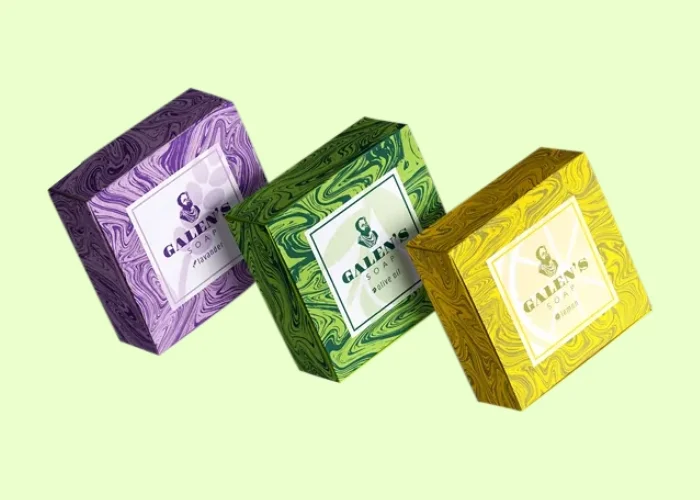
The customization possibilities for square soap boxes are virtually limitless. Whether your brand’s aesthetic is minimalist, luxurious, or playful, square boxes can be designed to reflect your unique identity. Digital printing allows for vibrant, full-color designs that cover the entire surface of the box, making it easy to create eye-catching packaging that grabs attention.
For a more premium look, foil stamping can be used to add metallic accents to the design. This technique is particularly effective for highlighting brand logos or special product features. Embossing and debossing are also popular options for adding texture and depth to the packaging, creating a tactile experience that engages consumers.
Die-cut windows can be incorporated into the square box design to allow customers to see the soap inside. This feature adds an element of transparency and trust, as consumers can inspect the product before purchasing. Additionally, die-cutting can be used to create unique shapes or patterns on the box, further enhancing its visual appeal.
Square soap boxes can be designed in a variety of ways to reflect the uniqueness of the product inside. For example, a brand that specializes in luxury, handmade soaps might use white rigid boxes with a soft-touch finish and gold foil stamping to create a clean, sophisticated look. The box could include a die-cut window that reveals the intricately designed soap inside, adding to the premium unboxing experience.
Another example could be a brand that focuses on eco-friendly products. Kraft paper square boxes with natural, earthy tones and simple, minimalist designs can effectively communicate the brand’s commitment to sustainability. The use of recycled materials and eco-friendly inks can further reinforce this message, appealing to environmentally conscious consumers.
For brands targeting a younger, more playful audience, square soap boxes with vibrant colors, bold patterns, and whimsical fonts can create a fun and engaging packaging experience. The square shape lends itself well to creative designs that can be stacked or arranged in eye-catching displays, making the product more appealing to potential buyers.
In conclusion, square soap boxes offer a unique and versatile packaging solution that can be customized to reflect your brand’s identity. By experimenting with materials, designs, and finishing techniques, you can create packaging that not only protects your product but also enhances its appeal and distinguishes it from competitors.
The window not only allows customers to see the soap’s color, texture, and unique features but also adds a layer of transparency that builds trust. Consumers appreciate being able to inspect the product before making a purchase, and the combination of kraft material with a window offers the best of both worlds: a sustainable packaging solution that also highlights the product’s qualities.
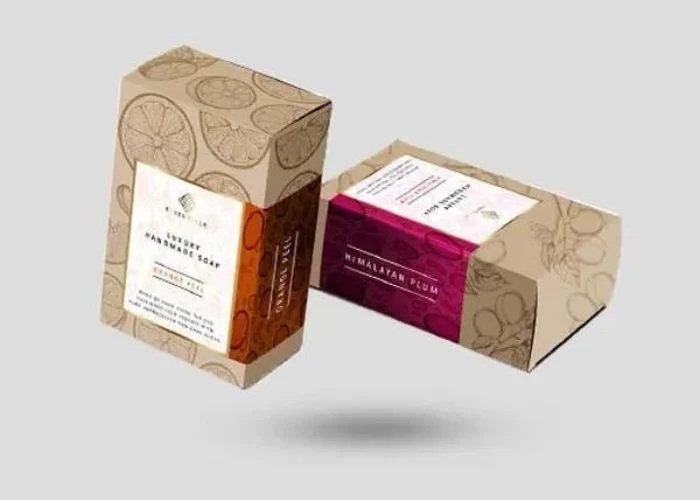
The placement of the window is also crucial. It should be positioned to highlight the most visually appealing aspects of the soap, whether that’s the swirl of colors, the inclusion of natural ingredients, or the overall shape of the bar. Printing around the window can be used to draw attention to specific features of the soap, such as its fragrance, ingredients, or benefits.
In addition to the window, the overall design of the kraft soap box should align with the brand’s identity. Minimalist designs with simple, clean lines can complement the natural look of kraft paper, while more elaborate designs can add a touch of elegance and sophistication.
To make your product stand out with custom kraft packaging, it’s essential to focus on both the functionality and the aesthetics of the packaging. Custom printing can be used to add your brand’s logo, product name, and other essential information to the kraft box. The use of eco-friendly inks and printing processes can further reinforce your brand’s commitment to sustainability.
Incorporating unique design elements, such as embossing, debossing, or foil stamping, can elevate the packaging’s visual appeal while maintaining the rustic charm of kraft paper. For instance, embossing the brand’s logo on the kraft box can add a tactile dimension, making the packaging more engaging to the touch. Similarly, foil stamping can introduce a hint of luxury without overshadowing the natural aesthetics of the kraft material.
To further differentiate your product, consider using personalized touches such as hand-tied twine or custom tags that highlight the soap’s unique qualities or the brand’s story. These small details can create a more memorable unboxing experience, encouraging repeat purchases and fostering brand loyalty.
Ultimately, the key to making your product stand out with custom kraft soap boxes with windows lies in balancing simplicity with thoughtful design. By choosing the right combination of materials, design elements, and finishing touches, you can create packaging that not only protects your soap but also enhances its appeal, resonates with eco-conscious consumers, and reinforces your brand’s identity.
With the increasing popularity of travel-sized products, eco-friendly travel soap boxes have become an essential packaging solution for brands looking to cater to consumers who are always on the go. Travel-sized soaps offer convenience and portability, making them ideal for vacations, business trips, or even daily use at the gym. However, the packaging for these products needs to be compact, durable, and sustainable to meet the demands of modern consumers.

When designing eco-friendly travel soap boxes, the key is to create packaging that is both compact and functional. The box should be small enough to fit easily into a travel bag or toiletry kit, yet sturdy enough to protect the soap from moisture, dirt, and damage. Kraft paper and recycled cardboard are popular materials for travel soap boxes, as they are lightweight, durable, and sustainable.
To enhance the practicality of the packaging, consider incorporating features such as resealable closures or snap-lock tabs that keep the soap secure and fresh between uses. For an added touch of convenience, you might also include a drainage feature or ventilation holes in the design to help the soap dry out after use, preventing it from becoming soggy or disintegrating.
Custom printing can be used to add branding elements, product information, and usage instructions to the travel soap box. Given the limited space on the packaging, it’s important to keep the design clean and simple, focusing on the most critical information and brand identifiers. The use of natural colors and minimalist designs can further emphasize the eco-friendly nature of the product.
Customization is essential for making travel-sized soap packaging stand out in a crowded market. While the packaging should be compact, it should also be visually appealing and reflective of the brand’s identity. Digital printing allows for high-quality, full-color designs that can cover the entire surface of the box, making it possible to create eye-catching packaging even on a small scale.
For brands that prioritize sustainability, using eco-friendly inks and printing processes can further reinforce the environmental credentials of the product. Additionally, incorporating die-cut windows or transparent sections in the box can allow consumers to see the soap inside, adding a level of transparency and trust.
For a more luxurious feel, consider using premium materials like recycled rigid board or adding special finishes such as embossing or foil stamping. These elements can elevate the perceived value of the travel-sized soap, making it an attractive option for consumers looking for high-quality, eco-friendly products.
In conclusion, eco-friendly travel soap boxes offer a practical and sustainable packaging solution for consumers on the go. By focusing on compact design, functionality, and thoughtful customization, brands can create travel-sized packaging that not only meets the needs of their customers but also aligns with their environmental values and enhances their brand image.
For businesses looking to optimize their packaging costs, wholesale soap boxes offer a cost-effective solution that provides significant savings on bulk orders. Ordering packaging materials in larger quantities typically reduces the per-unit cost, allowing brands to invest in higher-quality materials or more elaborate designs without exceeding their budget. This is particularly beneficial for small to medium-sized businesses that need to manage their expenses while maintaining a professional brand image.
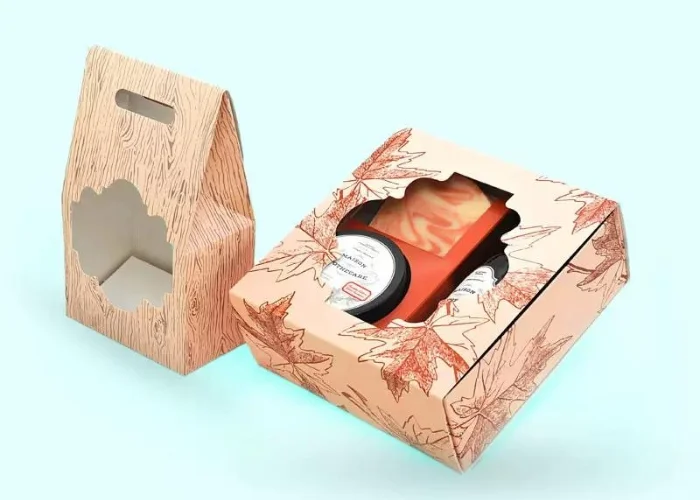
Despite the cost savings associated with wholesale packaging, there are still plenty of customization options available to ensure your soap boxes reflect your brand’s unique identity. Custom printing is a common option, allowing brands to add logos, product information, and other design elements to the boxes. Even in bulk orders, the quality of printing can be maintained, ensuring that the packaging remains visually appealing and professional.
Embossing, debossing, and foil stamping are additional customization techniques that can be applied to wholesale soap boxes. These methods add texture and shine to the packaging, making it more engaging and attractive. For brands looking to create a premium feel, these techniques can be used to highlight specific design elements, such as the brand’s logo or product name.
Die-cut windows are another popular feature for wholesale soap boxes, especially for brands that want to showcase their products. By incorporating a window into the design, customers can see the soap inside, which can enhance the product’s appeal and increase the likelihood of a purchase.
When ordering wholesale soap boxes, it’s important to strike a balance between cost and quality. While bulk orders typically offer lower per-unit costs, it’s essential not to compromise on the quality of the materials or the overall design of the packaging. High-quality packaging not only protects the soap but also enhances the customer experience, making it a crucial aspect of your brand’s reputation.
To ensure you’re getting the best value for your money, work closely with your packaging supplier to select materials and finishes that meet your budget without sacrificing quality. Consider opting for materials that offer a good balance of durability and cost-effectiveness, such as recycled cardboard or kraft paper. These materials are not only affordable but also environmentally friendly, aligning with the growing consumer demand for sustainable products.
In conclusion, wholesale soap boxes provide a cost-effective packaging solution for brands looking to manage their expenses while maintaining high standards of quality and design. By customizing the packaging to reflect your brand’s identity and carefully selecting materials that balance cost and durability, you can create packaging that resonates with consumers and supports your business’s growth.
In a competitive market, where consumers are often faced with numerous options, the label is often the first point of contact between the product and the consumer. It needs to grab attention, communicate the brand’s message, and provide all necessary information in a clear and concise manner. A poorly designed label can detract from the overall appeal of the product, leading to missed sales opportunities and a weaker brand presence.
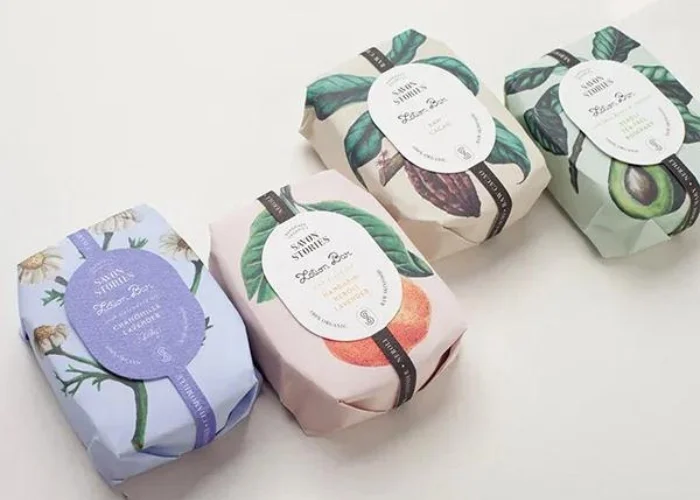
Die-cutting can be used to create custom shapes for the label, allowing it to fit perfectly around the soap or add an element of uniqueness to the packaging. For example, a label could be die-cut into the shape of a leaf to emphasize the natural ingredients in the soap or into a more intricate design that aligns with the brand’s aesthetic.
Waterproof labels are also worth considering, especially for products that will be used in wet environments, like the shower or bath. These labels can be made from materials that resist water and moisture, ensuring that they remain intact and legible throughout the product's lifespan.
In addition to the visual design, the material of the label is also crucial. Recycled paper or biodegradable labels can be used to align with eco-friendly branding, while high-gloss or matte finishes can add a luxurious touch, depending on the desired effect.
Choosing the right material and finish for your soap bar labels is essential to achieving the desired look and functionality. Here are some options:
• Paper Labels: Traditional paper labels are cost-effective and versatile. They can be printed in a variety of colors and finishes, making them suitable for a wide range of branding needs. For a rustic or organic feel, uncoated or kraft paper labels are ideal.
• Vinyl Labels: Vinyl labels offer durability and water resistance, making them perfect for soaps that will be stored in damp environments. They are also flexible, allowing them to conform to curved surfaces without peeling.
• Clear Labels: Clear labels provide a seamless look, allowing the color and texture of the soap to show through the label. This is particularly effective for visually striking soaps where you want to let the product itself take center stage.
• Foil Labels: For a luxurious, high-end appearance, foil labels are an excellent choice. They can be made from metallic materials or printed with foil accents to add a touch of elegance and sophistication.
• Textured Labels: Textured labels add a tactile element to the packaging, making it more engaging. Embossed or debossed textures can highlight specific parts of the design, such as the brand name or logo, while also enhancing the overall sensory experience.
By carefully selecting the right combination of material and finish, you can create soap bar labels that not only enhance the visual appeal of your product but also reflect the quality and values of your brand.
For brands that offer gift sets or special edition soaps, investing in luxury packaging is essential. It not only makes the product more appealing to consumers but also allows the brand to position itself as a premium option in the market. Whether it's for personal gifting or corporate giveaways, luxury gift soap boxes help to make a lasting impression.

The unboxing experience is a key factor in luxury packaging, and gift soap boxes should be designed with this in mind. The choice of materials, colors, and finishes all contribute to creating a sense of anticipation and excitement as the recipient opens the box.
Rigid boxes with magnetic closures or ribbon ties add a touch of sophistication, while soft-touch finishes or velvet linings enhance the tactile experience. Foil stamping, embossing, and debossing can be used to add texture and shine to the box, making it more visually striking.
For a more personalized touch, consider adding a custom message or the recipient’s name to the packaging. This can be done through custom printing or with the use of luxury tags or inserts. Including a special note or brand story inside the box adds an emotional connection to the unboxing experience, making it more memorable.
The materials used in luxury gift soap boxes play a significant role in the overall impression of the packaging. Rigid board is a popular choice for luxury packaging due to its durability and premium feel. This material can be covered with a variety of finishes, including matte, gloss, or textured papers, to create the desired look.
For an eco-friendly approach, recycled materials can be used without compromising on quality. Recycled rigid board or kraft paper can be combined with luxurious finishes to create packaging that is both sustainable and elegant.
Specialty papers such as pearlescent, metallic, or handmade papers can add an extra layer of luxury to the packaging. These materials catch the light and add a unique visual appeal that sets the product apart from standard packaging options.
By carefully selecting the right materials and finishes, brands can create luxury gift soap boxes that not only protect and present the product beautifully but also create a memorable unboxing experience that resonates with the consumer.
Custom printing offers endless possibilities for personalizing your soap boxes and creating packaging that truly stands out. With custom printing, brands can showcase their logos, colors, and design elements in a way that is consistent with their overall brand identity. This not only reinforces brand recognition but also enhances the product’s appeal on retail shelves.
One of the main benefits of custom printing is the ability to create unique, eye-catching designs that capture the attention of consumers. Whether through vibrant colors, intricate patterns, or high-resolution images, custom printing allows brands to differentiate their products from competitors and create a strong visual impact.
Advancements in printing technology have made it easier than ever to create high-quality, custom-printed soap boxes. Here are some of the most popular techniques:
• Offset Printing: This traditional printing method is ideal for producing large quantities of soap boxes with consistent, high-quality results. It’s known for its ability to reproduce sharp images and vibrant colors, making it perfect for detailed designs.
• Flexographic Printing: Commonly used for packaging, flexographic printing is a versatile method that can be used on various materials, including cardboard and kraft paper. It’s ideal for large-scale production and can handle a wide range of inks and coatings.
• Screen Printing: For a tactile finish, screen printing can be used to apply thicker layers of ink, creating raised designs or textures on the packaging. This technique is particularly effective for bold, simple designs.
• Foil Stamping: Foil stamping adds a metallic sheen to specific areas of the design, such as the brand name or logo. This technique is often used in luxury packaging to add a touch of elegance and sophistication.
There are countless ways to get creative with custom printed soap boxes. For example, a brand that focuses on natural, organic ingredients might use kraft paper boxes with earthy tones and botanical illustrations printed on the surface. The design could include a die-cut window that reveals the soap inside, adding an element of transparency and trust.
Another brand might opt for a bold, modern design with high-gloss finishes and vibrant colors. The use of foil stamping and embossing could highlight the brand’s logo, creating a striking contrast against the colorful background. This type of packaging would be particularly effective for soaps targeted at younger consumers or those looking for something unique and trendy.
For a luxury brand, rigid boxes with soft-touch finishes and metallic foil accents can create a premium feel. The use of spot UV printing to add subtle gloss to certain areas of the design can create depth and sophistication, making the packaging as much of a selling point as the product itself.
In conclusion, custom printed soap boxes offer a powerful way to personalize your packaging and create a memorable brand experience. By exploring different printing techniques and getting creative with your designs, you can develop packaging that not only protects your soap but also enhances its appeal and strengthens your brand’s presence in the market.
Choosing the right packaging for your soap products involves several key considerations that go beyond just aesthetics. The packaging must not only look appealing but also protect the soap, reflect your brand’s identity, and meet practical needs such as shipping and shelf life. Here are some factors to consider:
Material: The choice of material is crucial in determining the durability, cost, and environmental impact of the packaging. Kraft paper, cardboard, and rigid board are popular options, each offering different benefits. Consider whether you need a material that is eco-friendly, luxurious, or budget-friendly.
Design and Branding: The packaging should align with your brand’s visual identity, using consistent colors, fonts, and logos. Custom printing allows you to incorporate these elements seamlessly, creating a cohesive look that reinforces your brand.
Protection and Durability: The primary function of soap packaging is to protect the product. Ensure the packaging is sturdy enough to withstand transportation and handling, keeping the soap intact and fresh until it reaches the customer.
Functionality: Consider how the packaging will be used by the consumer. Easy-open features, resealable options, or packaging that doubles as a soap dish can add value to the product and improve the user experience.
Sustainability: With increasing consumer demand for environmentally friendly products, choosing sustainable materials for your packaging is more important than ever. Recycled materials, biodegradable options, or minimalistic designs that reduce waste are all factors to consider.
When comparing different packaging styles and materials, it’s important to evaluate them based on how well they meet your brand’s needs and the expectations of your target audience. Here’s a quick comparison:
• Kraft Paper: Ideal for eco-friendly brands, kraft paper offers a natural, rustic look that appeals to consumers who prioritize sustainability. It’s biodegradable, recyclable, and can be easily customized with eco-friendly inks.
• Cardboard: Versatile and cost-effective, cardboard is suitable for a wide range of soap products. It offers good protection, can be printed with high-quality designs, and is available in recycled options.
• Rigid Board: Perfect for luxury products, rigid board provides a premium feel and excellent protection. It’s ideal for high-end soaps or gift sets and can be enhanced with special finishes like embossing, foil stamping, or soft-touch coatings.
• Soap Sleeves: Sleek and modern, soap sleeves are a minimalist option that uses less material while still offering customization opportunities. They’re ideal for brands looking to create a contemporary, stylish look.
To ensure your soap packaging aligns with your brand values and resonates with your customers, consider the following tips:
• Know Your Audience: Understand who your customers are and what they value. Are they eco-conscious? Do they prioritize luxury? Tailor your packaging choices to meet their expectations.
• Highlight Your Brand’s Story: Use packaging as a canvas to tell your brand’s story. Whether it’s through design, materials, or messaging, ensure your packaging reflects the essence of your brand.
• Sustainability: If sustainability is a core value of your brand, make it a visible part of your packaging. Use recycled materials, biodegradable options, and clearly communicate your environmental commitment on the packaging.
• Consistency: Ensure consistency across all your products. Whether it’s through color schemes, logos, or design elements, consistent packaging helps build brand recognition and loyalty.
• Innovation: Don’t be afraid to innovate. Whether it’s through unique packaging shapes, interactive elements, or limited-edition designs, finding new ways to engage customers through packaging can set your brand apart.
In conclusion, selecting the right soap packaging is a multifaceted decision that involves balancing aesthetics, functionality, protection, and sustainability. By considering these factors and aligning them with your brand values and customer preferences, you can create packaging that not only protects your product but also enhances your brand’s appeal and drives customer loyalty.
In today’s environmentally conscious marketplace, sustainable packaging is no longer just a trend—it’s a necessity. Consumers are increasingly looking for brands that align with their values, and one of the most prominent values is sustainability. By adopting eco-friendly packaging solutions, brands can build trust with their customers and foster long-term loyalty.
Sustainable packaging shows that your brand is committed to reducing its environmental impact, which resonates strongly with consumers who prioritize eco-consciousness in their purchasing decisions. When customers see that your packaging is made from recycled materials, is biodegradable, or uses minimal resources, they are more likely to trust your brand and feel good about supporting it.
Numerous brands have successfully leveraged sustainable packaging to enhance their brand image and build customer loyalty. For example, a soap brand that switched to 100% recycled cardboard boxes saw an increase in sales and positive customer feedback, as consumers appreciated the brand’s commitment to sustainability. The brand also gained media attention, further boosting its reputation and market presence.
Another case study involves a luxury soap brand that introduced biodegradable soap wrappers made from plant-based materials. The brand’s eco-friendly packaging not only attracted environmentally conscious consumers but also allowed the brand to charge a premium price for its products. The packaging became a key selling point, helping the brand stand out in a crowded market.
These examples demonstrate how sustainable packaging can be a powerful tool for building brand loyalty and driving sales. By prioritizing sustainability, brands can create a positive association with their products and appeal to a growing segment of eco-conscious consumers.
If you’re considering making the switch to sustainable packaging, here are some tips to help you get started:
Choose Sustainable Materials: Opt for materials that are recyclable, biodegradable, or made from renewable resources. Kraft paper, recycled cardboard, and plant-based plastics are all excellent options.
Reduce Packaging Waste: Minimize the amount of material used in your packaging by opting for simpler designs or smaller packages. This not only reduces waste but also lowers shipping costs.
Communicate Your Efforts: Make sure your customers know about your commitment to sustainability. Use labels, inserts, or packaging designs that highlight the eco-friendly aspects of your packaging.
Innovate with New Technologies: Stay informed about new developments in sustainable packaging, such as compostable materials or water-based inks. Incorporating these innovations can give your brand a competitive edge.
Educate Your Customers: Provide information on how to properly recycle or dispose of your packaging. This not only helps the environment but also positions your brand as a responsible and caring entity.
By implementing these sustainable practices, you can not only reduce your environmental impact but also strengthen your brand’s relationship with customers, ultimately leading to greater loyalty and long-term success.
Packaging plays a critical role in the success of any product launch. It’s the first physical touch point that consumers have with the product, and it can significantly influence their purchasing decision. Custom soap packaging allows brands to create a memorable first impression, differentiate their product from competitors, and communicate key benefits directly on the package.
For a successful product launch, the packaging needs to align with the brand’s overall strategy, resonate with the target audience, and reflect the product’s unique selling points. Whether launching a new soap line or introducing a limited-edition product, custom packaging can make all the difference in driving initial sales and creating buzz around the product.
To ensure that your packaging grabs attention during a product launch, it’s important to focus on both visual appeal and functionality. Bold colors, innovative designs, and high-quality materials can make your product stand out on crowded shelves. Custom elements like embossing, foil stamping, or die-cut windows can add a touch of luxury and intrigue, making the packaging more engaging.
In addition to aesthetics, the packaging should also be practical and user-friendly. Features like easy-open tabs, resealable closures, or compact designs that fit well in consumers’ hands can enhance the user experience and make the product more appealing.
Several brands have successfully used custom packaging to launch new products and create a strong market presence. For example, a natural skincare brand launching an organic soap line might use kraft paper boxes with eco-friendly printing and earthy designs. The packaging could include a clear window to showcase the soap’s natural ingredients, making it visually appealing and transparent.
Another example could be a luxury brand launching a high-end soap line. They might opt for rigid boxes with soft-touch finishes, metallic foil accents, and a magnetic closure. The packaging would not only protect the product but also create a premium unboxing experience that justifies a higher price point.
These examples highlight how thoughtful, custom packaging can play a crucial role in a product launch, helping to create a strong first impression, drive consumer interest, and ultimately contribute to the product’s success.
The future of soap packaging is likely to be defined by innovations in materials and design that prioritize sustainability and functionality. As consumers become more environmentally conscious, brands will need to adopt new materials that are both sustainable and effective at protecting the product.
Emerging materials, such as biodegradable plastics made from plant-based sources, compostable films, and recycled paperboard, are expected to become more mainstream. These materials offer the same protective qualities as traditional packaging but with a significantly reduced environmental impact.
In terms of design, we can expect to see more modular packaging that can be easily disassembled and recycled. Minimalist designs that use fewer materials while still providing an engaging unboxing experience will continue to gain popularity. Additionally, the use of smart packaging—such as labels that track product freshness or QR codes that offer interactive content—will likely become more widespread.
Sustainability will remain a dominant trend in the future of soap packaging. Brands will increasingly focus on reducing their carbon footprint by adopting zero-waste packaging solutions, using renewable energy in production, and sourcing materials responsibly.
Closed-loop systems, where packaging can be returned, reused, or recycled indefinitely, are likely to become more common. Brands may also explore edible packaging or water-soluble packaging that completely eliminates waste.
Moreover, the push for transparency will continue, with more brands providing detailed information about the environmental impact of their packaging choices. Consumers will expect brands to take a proactive approach to sustainability, and those that do will be rewarded with increased loyalty and market share.
To stay ahead of the curve in the rapidly evolving landscape of soap packaging, brands should focus on the following strategies:
Invest in Research and Development: Stay informed about the latest advancements in packaging materials and technologies. Investing in research and development can help your brand adopt cutting-edge solutions that meet both environmental and consumer needs.
Invest in Research and Development: Stay informed about the latest advancements in packaging materials and technologies. Investing in research and development can help your brand adopt cutting-edge solutions that meet both environmental and consumer needs.
Collaborate with Innovators: Partner with packaging suppliers and designers who specialize in sustainable and innovative solutions. Collaborative efforts can lead to the development of packaging that sets your brand apart from competitors.
Engage with Consumers: Listen to your customers and understand their preferences and concerns regarding packaging. Use this feedback to guide your packaging decisions and ensure that your products align with consumer expectations.
Be Proactive in Sustainability: Don’t wait for regulations or consumer demand to drive your sustainability efforts. Take a proactive approach by adopting eco-friendly practices before they become industry standards. This forward-thinking approach will not only benefit the environment but also position your brand as a leader in sustainability.
Monitor Market Trends: Keep a close eye on emerging trends in packaging, consumer behavior, and environmental regulations. Staying informed will help you anticipate changes and adapt your packaging strategy accordingly.
By focusing on innovation and sustainability, brands can ensure that their soap packaging remains relevant, appealing, and environmentally responsible in the years to come.
A Project by : WNK AssociatesTim Packaging is a leading manufacturer and wholesale supplier of high-quality packaging products for a wide range of industries. Our extensive product line includes customized corrugated boxes, kraft boxes, mailer boxes, rigid boxes and more.
© Copyright 2024 - Tim Packaging All rights Reserved



